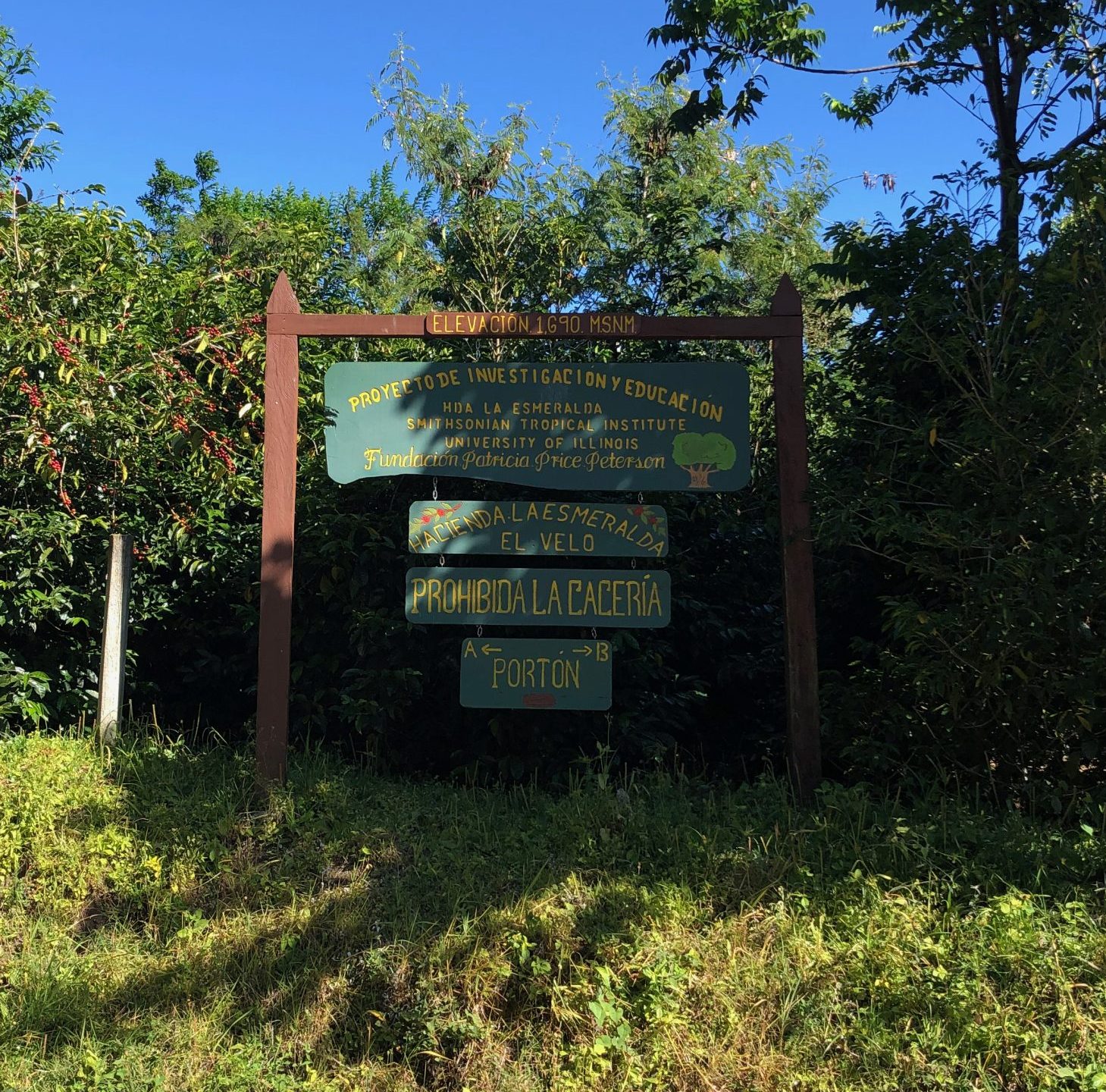 We began work at Volcan Baru in 2014, with the invitation to establish a research program at Finca El Velo. We gratefully acknowledge the support of Price Peterson and the Foundation Patricia Price Peterson.
We began work at Volcan Baru in 2014, with the invitation to establish a research program at Finca El Velo. We gratefully acknowledge the support of Price Peterson and the Foundation Patricia Price Peterson.
We have established a set of one-hectare and 0.2 ha forest plots that sample vegetation from 1700 m to 3200 m along the northeastern slope of Volcan Baru. These represent stunning examples of old-growth upper montane forests.
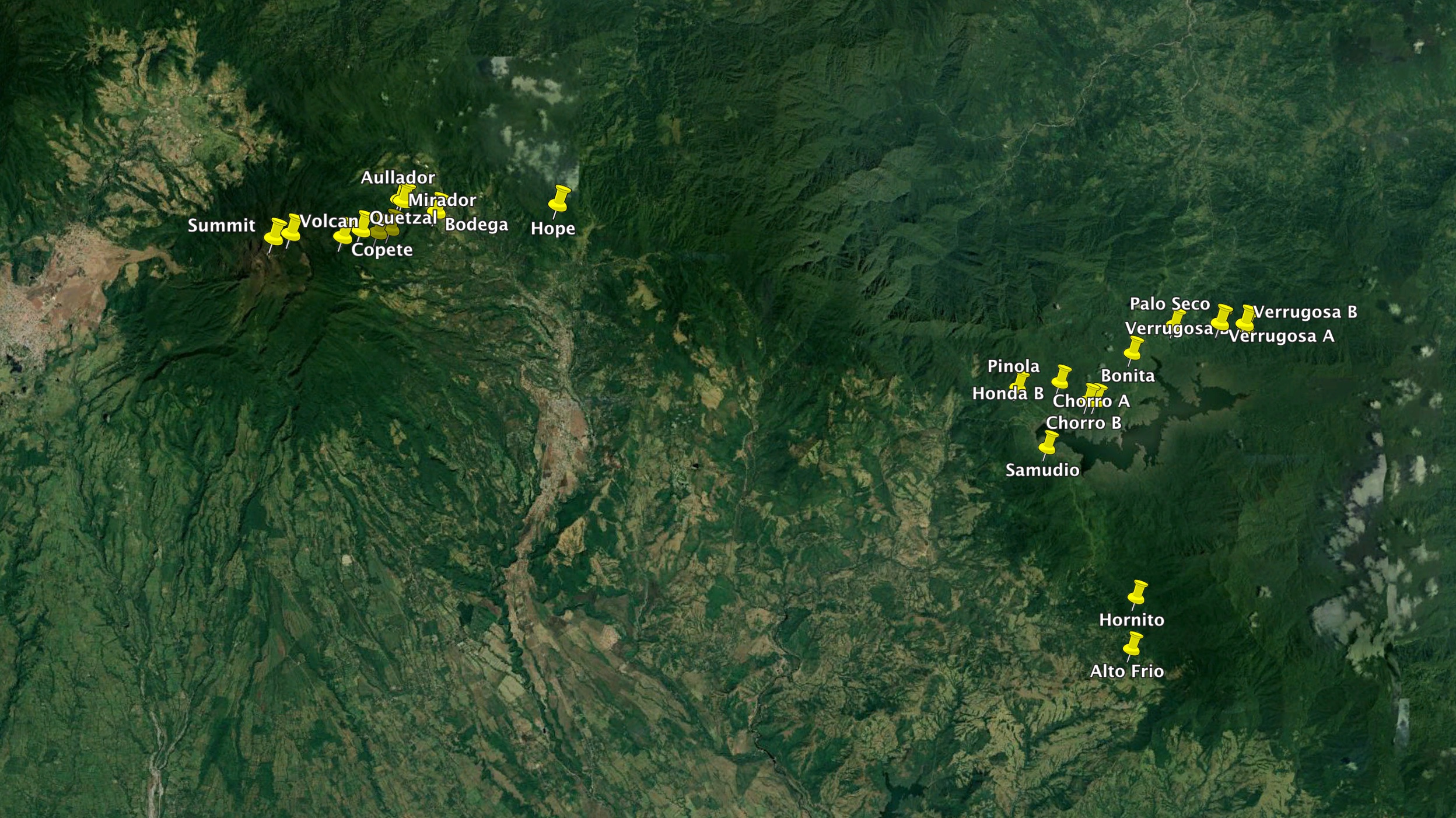
Google image of Volcan Baru (left) and Fortuna (right) permanent forest plots (Fortuna and Baru sites are about 30 km apart).
Our plots at Baru sample both mixed forest and oak-dominated forests, often at similar elevations. At the lower end of the elevational gradient we have mixed forests at Bodega and Mirador. These plots contain some of the largest trees we have seen in Panama, including individuals of Magnolia sororum >1.1m DBH and Ulmus mexicana >55 m tall.
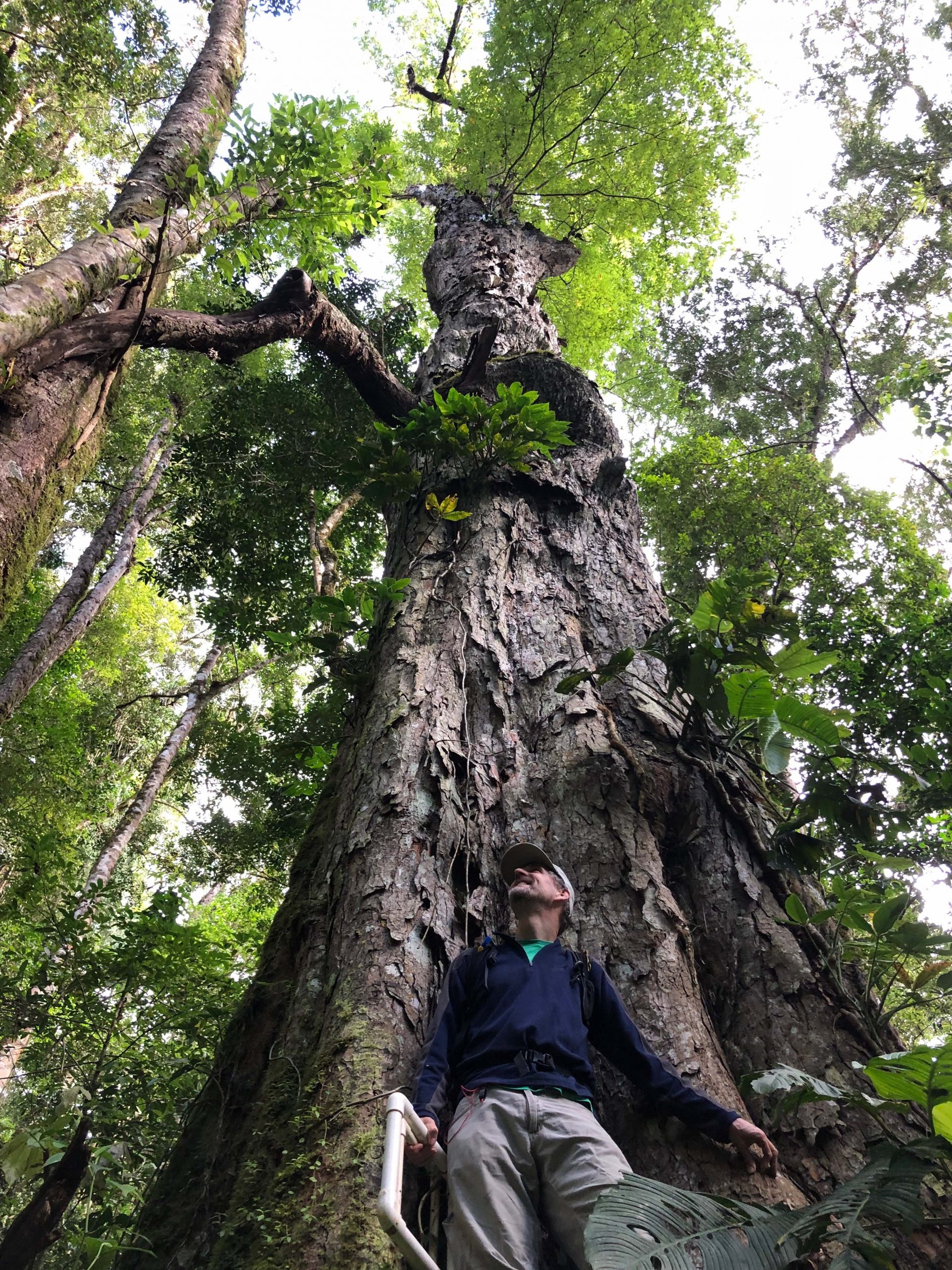
Individual of Ulmus mexicana in the Bodega forest plot
Above 1900 m the forest transitions into an oak-dominated community – first by Quercus salicifolia, and at higher elevations by Quercus costaricana. The midstory of these oak forests is also often filled with bamboo (mostly Chusquea cf foliosa). Recent bamboo mass flowering events have taken place at El Velo in 2013 (at 3000 m elevation) and in 2020 (at 2500 m elevation).
Soils in the oak forest have deep organic layers, sometimes exceeding 50 cm, and low extractable nitrogen availability compared to nearby mixed forests.
Soil profiles at Baru reflect the eruptive history of the volcano with layers of organic soil and pumice.
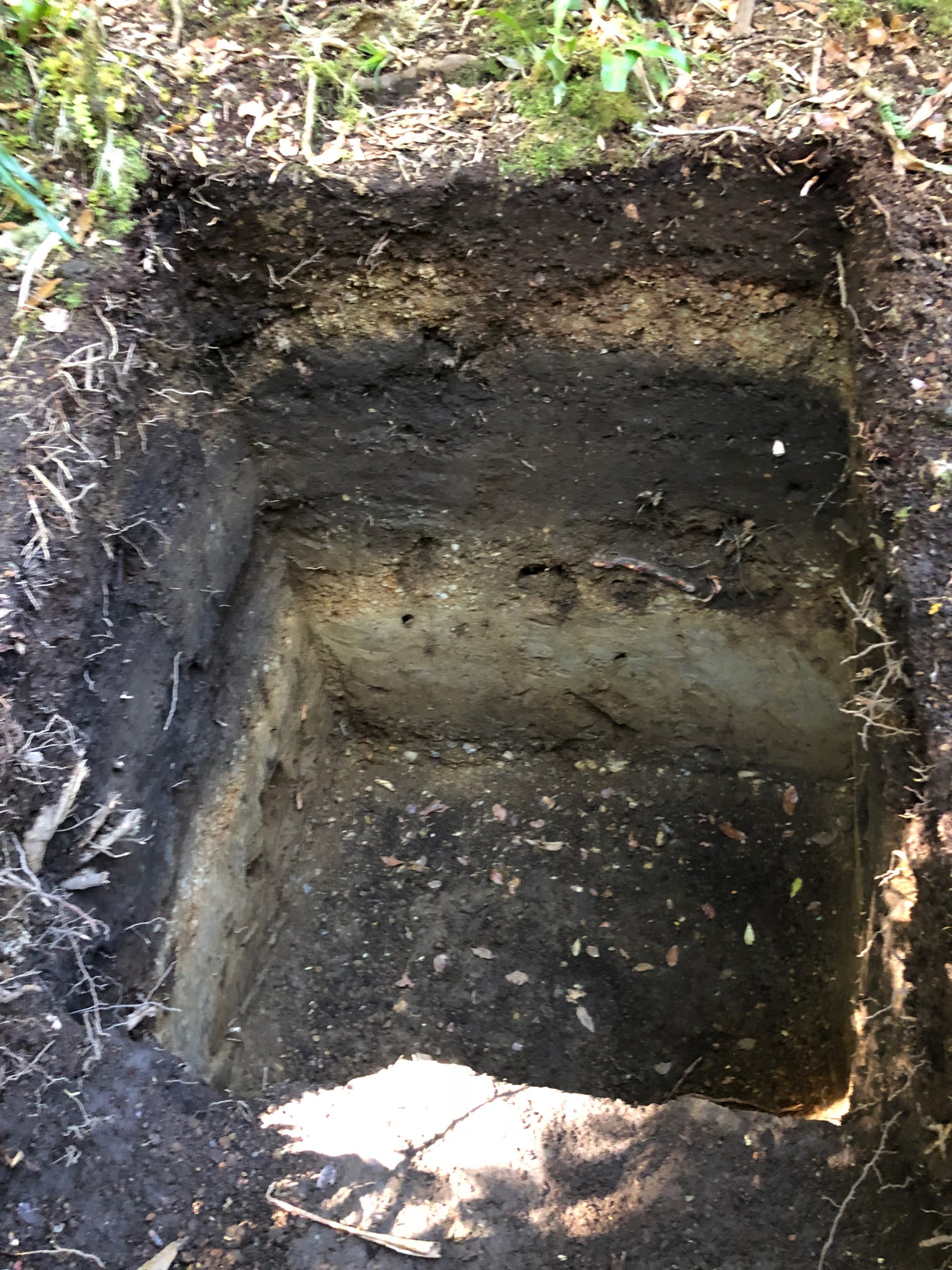
Soil pit at the Quetzal plot (2500 m elevation) showing pumice layers
Oak forests at Baru extend to 3100 m elevation – with progressively larger trees until abruptly transitioning to high elevation elfin mixed forest dominated by Vaccinium sp., Oreopanax sp., and Melastomataceae.
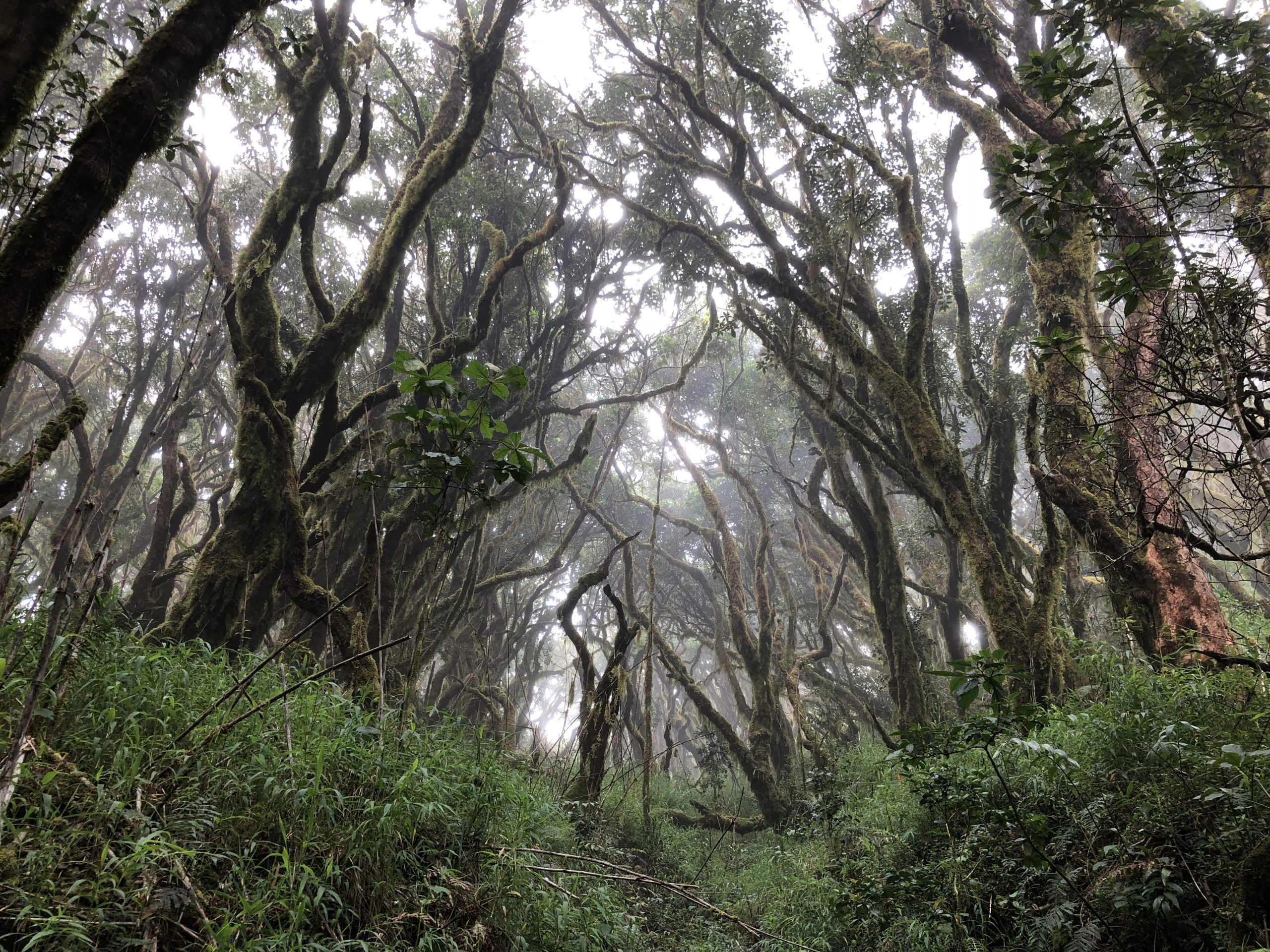
Elfin forest at the Volcan plot at 3200 m. The understory is open following dieback of bamboo. The overstory vegetation is Oreopanax and Vaccinium sp.

